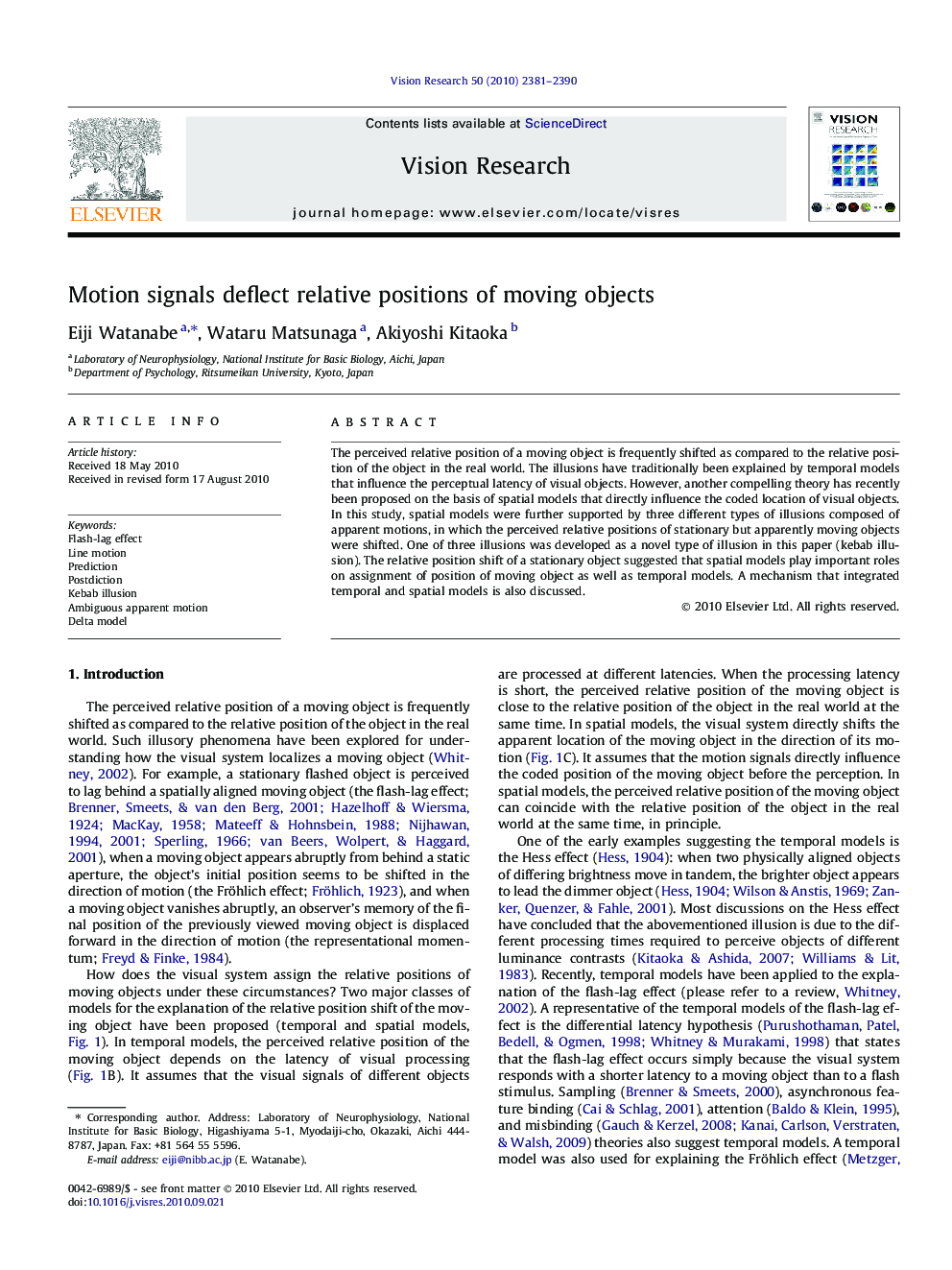| Article ID | Journal | Published Year | Pages | File Type |
|---|---|---|---|---|
| 6203802 | Vision Research | 2010 | 10 Pages |
The perceived relative position of a moving object is frequently shifted as compared to the relative position of the object in the real world. The illusions have traditionally been explained by temporal models that influence the perceptual latency of visual objects. However, another compelling theory has recently been proposed on the basis of spatial models that directly influence the coded location of visual objects. In this study, spatial models were further supported by three different types of illusions composed of apparent motions, in which the perceived relative positions of stationary but apparently moving objects were shifted. One of three illusions was developed as a novel type of illusion in this paper (kebab illusion). The relative position shift of a stationary object suggested that spatial models play important roles on assignment of position of moving object as well as temporal models. A mechanism that integrated temporal and spatial models is also discussed.
Research highlights⺠Relative position shift of a moving object in a line-motion effect (newly developed “kebab illusion”). ⺠Relative position shift of a moving object in an ambiguous apparent motion. ⺠Flash-lag effect in a simplistic apparent motion. ⺠Spatial mechanisms control the relative position of a moving object.
